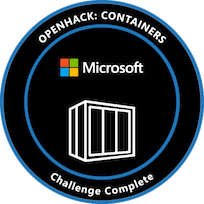
My experience at Microsoft Containers OpenHack featuring Kubernetes challenges
Azure consultants are constantly looking to expand our scope of expertise and aligning to this I’ve recently attended a Microsoft Containers OpenHack in Sydney. This event was a huge success for me and a rapid introduction to Kubernetes (K8s) and Azure Kubernetes Service (AKS) through a series of challenges over 3 days.

Microsoft OpenHack is a developer-focused engagement where a wide variety of participants (Open) learn through hands-on experimentation (Hack) using challenges based on real-world customer scenarios designed to mimic the developer journey – Source: Microsoft
My experience at OpenHack
About 80 attendees were split up between the 20 tables in the room.… [Keep reading] “My experience at Microsoft Containers OpenHack featuring Kubernetes challenges”
